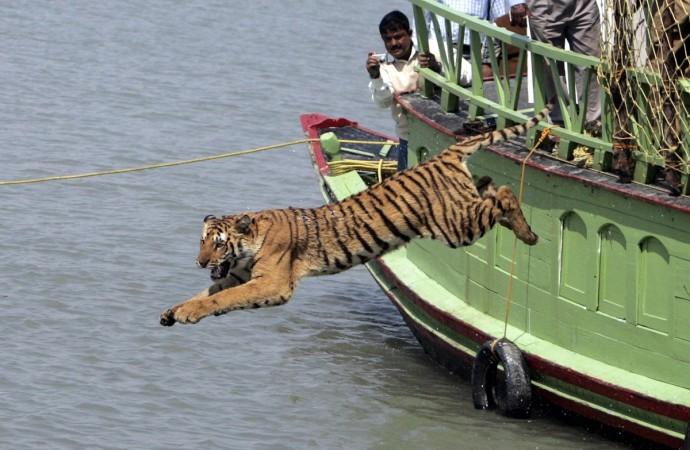
At least 76 tigers have died in India from January to October in 2016 with Madhya Pradesh topping the list of tiger deaths in the country. Nearly one-third of the deaths took place in the state, while Karnataka, which has the highest tiger population in the country, came second with a total of 13 deaths.
Tiger deaths have been the highest this year since 2010. Sixty-nine tigers had died in the year 2015. Conservationists believe that poaching of tigers is the reason behind the deaths since there has been a rise in the seizure of tiger body parts across India in 2016 with 20 seizures being registered till November which is also the highest since 2010.
The data was released by 'tigernet' - a collaborative effort of the National Tiger Conservation Authority and TRAFFIC India, the Times of India reported. TRAFFIC India is a wildlife trade monitoring network.
Thirty-five tiger deaths took place due to direct or indirect human intervention, including poaching, poisoning, electrocution, road accidents and elimination by authorities. Tigers attacking each other and other natural causes were also cited as reasons. The remaining 41 deaths are currently being investigated.
"We usually witness a high incidence of poaching from August to November every year, though the reasons for this trend are unknown...The situation this year seems far more grim as there has been an almost 10% increase in tiger mortality and an over 150% increase in seizures since last year," Shekhar Kumar Niraj, head of TRAFFIC India, told TOI.
"The Tadoba and Melghat regions of Maharashtra have always been more prone to tiger poaching. Maharashtra shares its border with Madhya Pradesh, where tiger mortality and cases of poaching are the highest. The Nagpur region is known for cases of illegal trade of wildlife body parts," Niraj added.
According to experts, the Centre's intelligence gathering is becoming more sophisticated considering the rise in the number of seizures that have helped arrest poachers.
"There have been some success stories where tigers are breeding well which has helped increase their count , but this has happened in isolated pockets and not in all sanctuaries. In the case of saturated reserves, cubs move out to look for their own territory and become vulnerable to poaching and road accidents," Debi Goenka, founder of NGO Conservation Action Trust, told the daily adding that tiger habitats in India were under tremendous pressure.
"Upgrading certain posts means that the job once handled by somebody much younger now has to be done by an older official of a higher rank. Such officials cannot really exert much energy. Department headquarters are closer to cities, where other officials often have to attend meetings. Fewer officials are thus left for protection work in reserves far away from the city," Goenka further added.

















